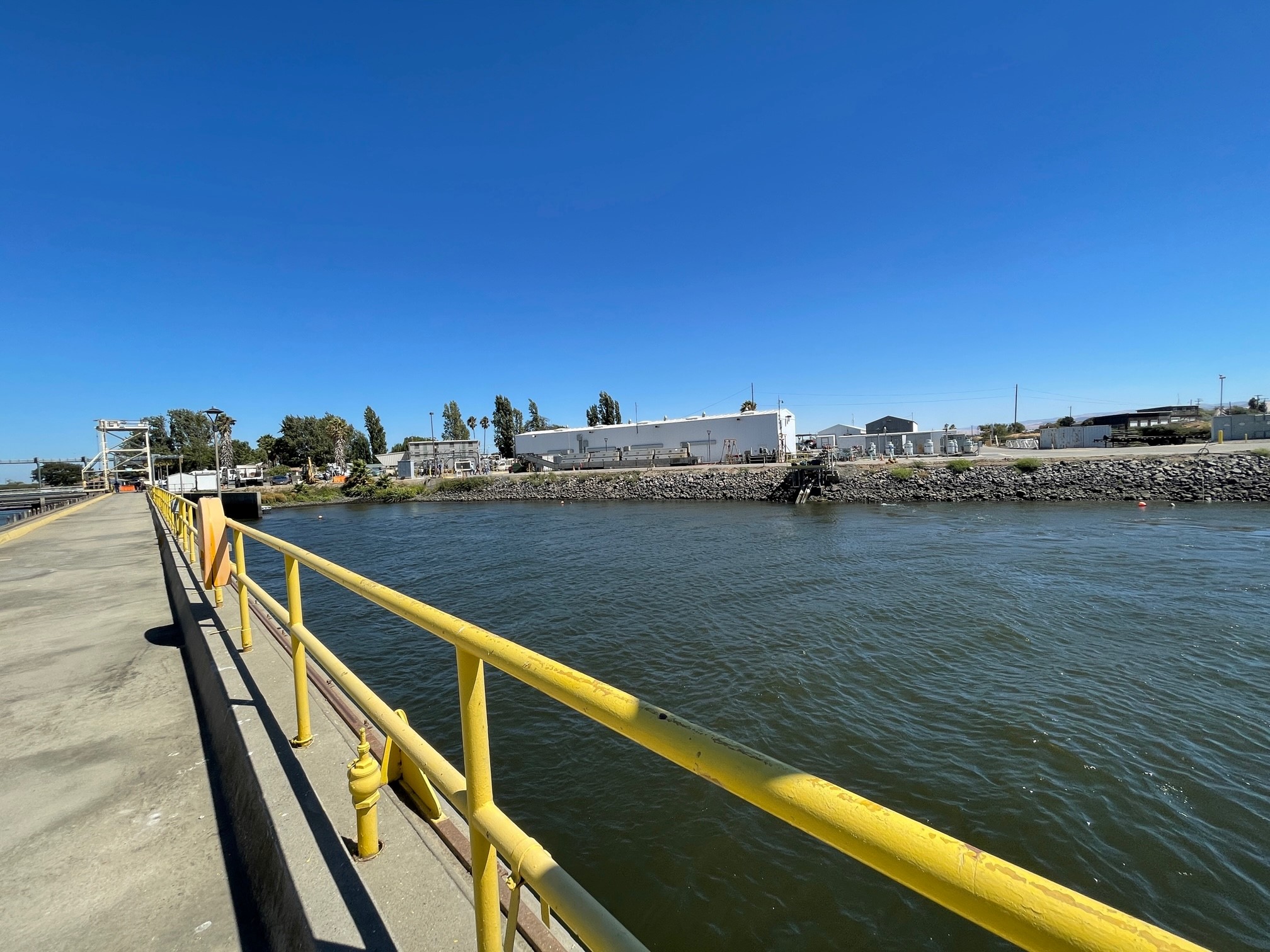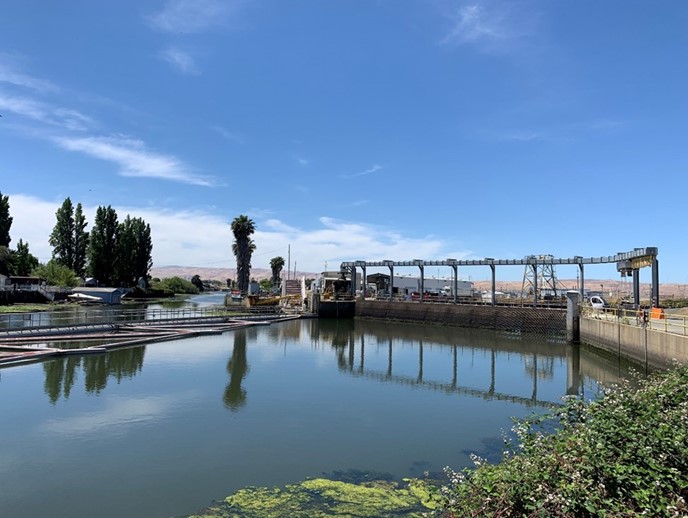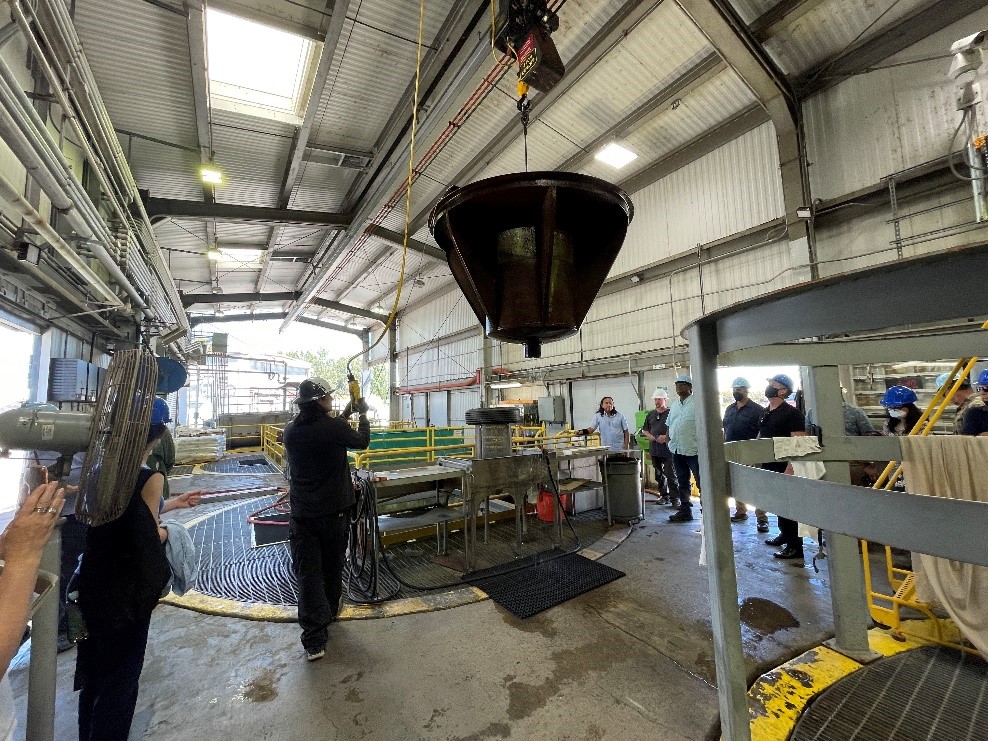Tracy Fish Collecting Facility Helps Ensure Unhindered Water Exports
 Reclamation's Tracy Fish Collecting Facility
Reclamation's Tracy Fish Collecting Facility
Every two hours, a large, funnel-shaped container at the Tracy Fish Collecting Facility releases a torrent of water to reveal the latest batch of fish to enter the large holding area. Water cascades down on a table as personnel sort wriggling fish from clumps of aquatic weeds.
The small, nondescript batch of buildings are situated about 7 miles northwest of where the bustling Interstate 205 connects the San Joaquin Valley to the Bay Area. Their modest appearance belies the important role of ensuring water is available to the C.W. Bill Jones Pumping Plant 2 miles downstream and fish loss caused by Jones’ export pumping is mitigated.
Export pumping at the Jones Pumping Plant relies on the ability of the Tracy Fish Collecting Facility to salvage pump-entrained Delta fish. “Jones Pumping Plant export pumping ceases if the Tracy Fish Collecting Facility is unable to salvage fish, which affects the Central Valley Project’s mission of water conveyance,” said René Reyes, supervisory fish biologist at Tracy.

In existence for more than 70 years, the Tracy Fish Collecting Facility is a complex system of louvers, bypasses, and holding tanks that pluck migrating fish from the waters of Old River before they reach the Jones Pumping Plant.
“This includes federally listed fish species such as Chinook salmon, steelhead, Delta smelt, and green sturgeon,” Reyes said. “It also includes non-listed fish species such as striped bass and largemouth bass, which are part of the economically important sport fishery.”
The facility has been the focus of recent attention – members of the Delta Stewardship Council’s Independent Science Board toured the complex in August, followed the next week by staff members with U.S. Senator Alex Padilla. More than a dozen people with Reclamation’s Denver office are scheduled to visit in September to assess the facility using several criteria.
The Tracy facility operations mesh with the Delta Cross Channel about 50 miles to the north and Jones, about 4 miles to the southwest. When Jones is operating at full capacity, about 4,600 cubic feet per second of water passes through (a cubic foot of water is about 7.5 gallons). Each year, about 1.6 million acre-feet of water passes through the Tracy facility toward the Jones Pumping Plant.
Native species account for about 3% of the fish salvaged at the Tracy facility, Reyes said. The salvaged fish are trucked and released at the confluence of the Sacramento and San Joaquin rivers. Some fish are euthanized for monitoring reasons. “Generally, we transport in mornings and evenings,” Reyes said, adding that salvaged fish are released within 12 hours if salmon and steelhead are collected and within 8 hours if Delta smelt are collected.

The fish guidance technology employed at the Tracy Fish Collecting Facility appears to be adequate for protecting salmon, effectively diverting approximately 90% of the outmigrant juvenile Chinook salmon when Jones is running at full capacity.

